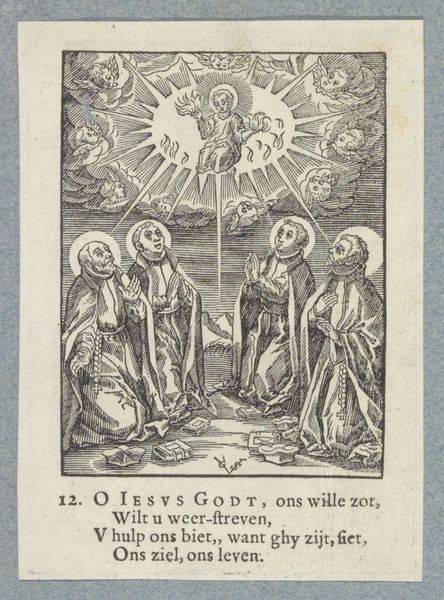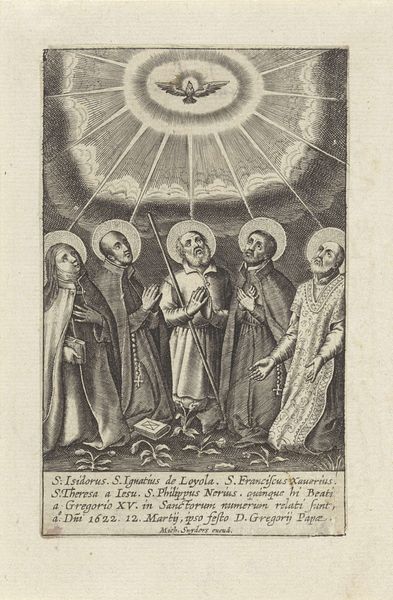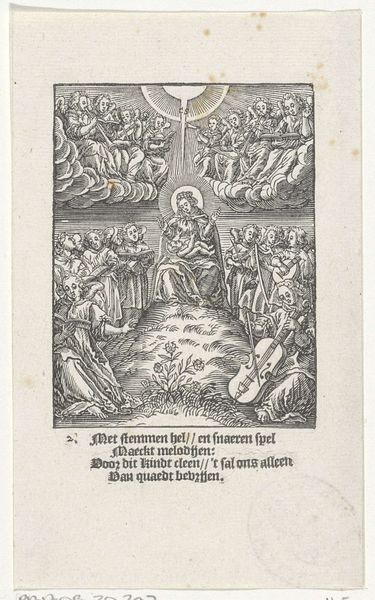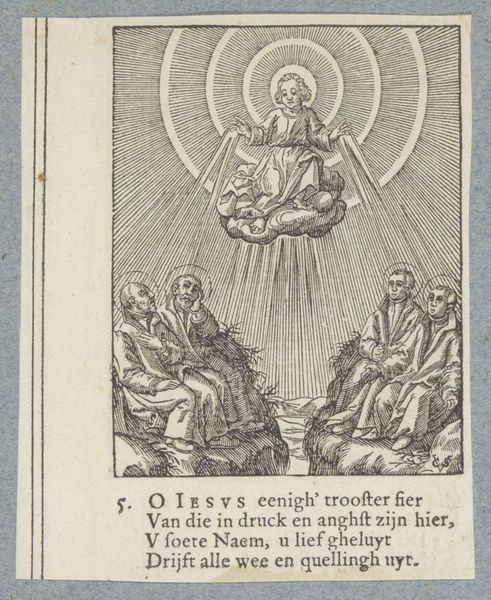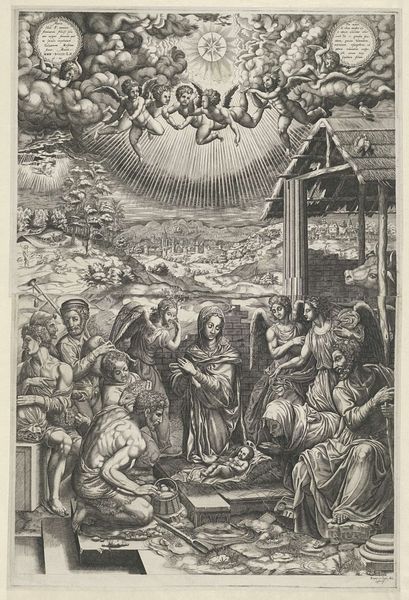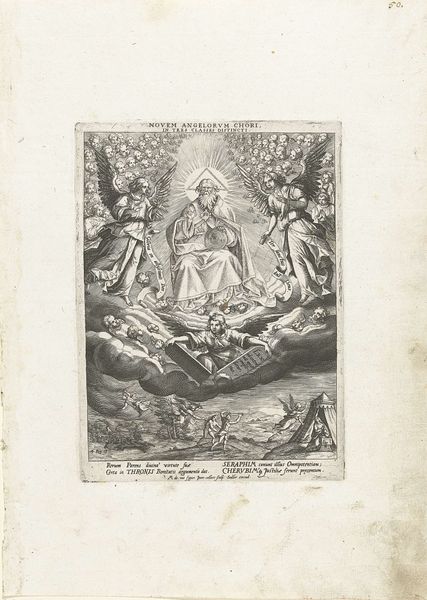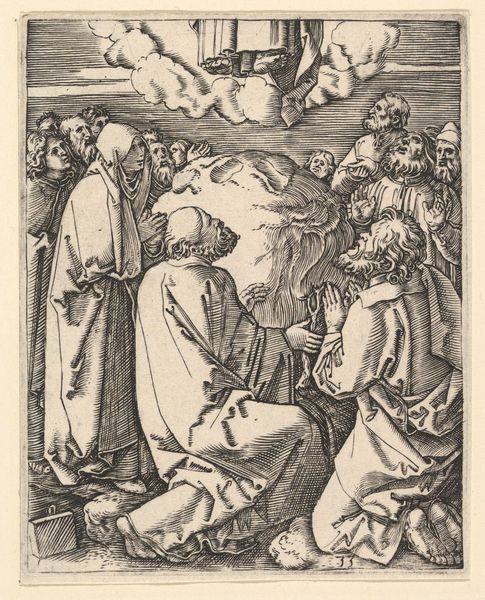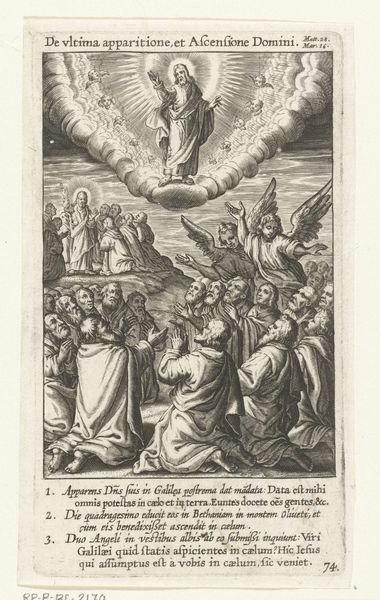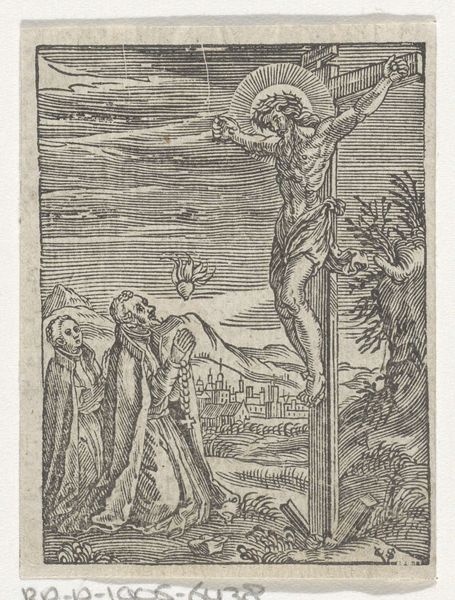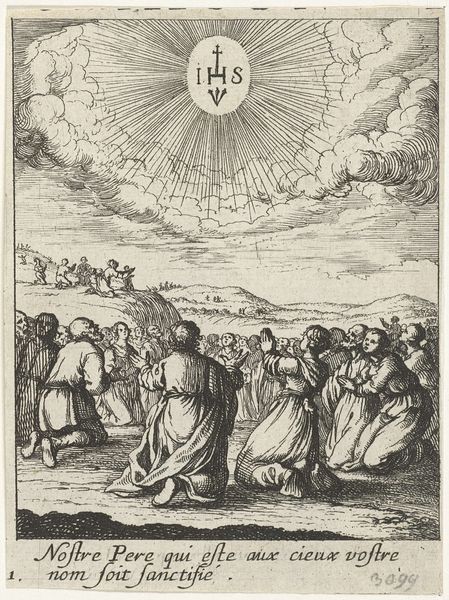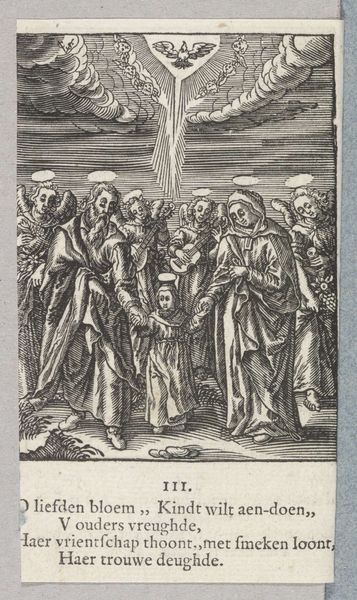
print, engraving
# print
#
pen illustration
#
old engraving style
#
figuration
#
line
#
northern-renaissance
#
engraving
Dimensions: height 137 mm, width 85 mm
Copyright: Rijks Museum: Open Domain
Curator: Let's delve into "Christuskind in nimbus," a 1617 engraving by Christoffel van Sichem the Younger, currently held in the Rijksmuseum. It's a detailed print showcasing religious figures and text. What are your immediate impressions? Editor: It feels rather...solemn. Stark, even, despite the radiant Christ Child. It’s like peering into a moment of intense devotion, but also something very rigid, constructed. The lines are so firm. Curator: The medium, engraving, certainly lends itself to that rigid quality. It necessitates meticulous labor. Each line had to be carved into the metal plate, reversed, inked, and then printed. Consider the levels of artisanal skill to create such detail in replicating form. The materiality dictates a certain aesthetic. Editor: And it’s quite busy, visually. Angels swirl above, figures kneel below amidst scattered books, all directed towards a divine light. It almost feels overwhelming, yet contained within this tiny frame. There is also a quote below. Did this artist create their own font as well? Curator: This "busyness", as you call it, speaks to the cultural context. The Northern Renaissance often featured a dense layering of symbols and allegories. That textual integration you identified certainly points toward that symbolic richness and reinforces the religious message of this piece, as well. Editor: It’s a bit didactic, isn’t it? Not subtle at all in its message, then. And the style is noticeably "line". There is this use of it for the figures' faces, giving them almost pained expressions, or really serene in the face of the angels. Curator: Precisely. While an artist has imparted the "emotional affect", to address how this imagery operated as a devotional object. Reproducible and available for many. The materiality aided its dispersal throughout the Netherlands in a period that saw its identity through Calvinistic prism of looking at faith. Editor: So, less about high art, and more about mass communication through carefully constructed imagery? Almost propaganda, then, but through the artisan’s hand and a deep-rooted belief system. What do you take from all this from the artwork, then? Curator: That there are visible echoes, even centuries later, when viewing this piece; a tangible and replicable manifestation and social influence of its production. Editor: For me, it’s a reminder that even within such defined constraints of materials and dogma, art can stir feelings within oneself when reflecting upon the faith in olden times.
Comments
No comments
Be the first to comment and join the conversation on the ultimate creative platform.
